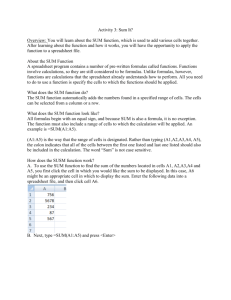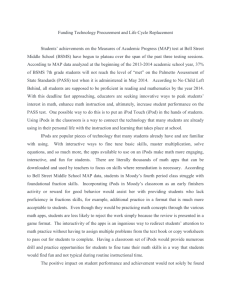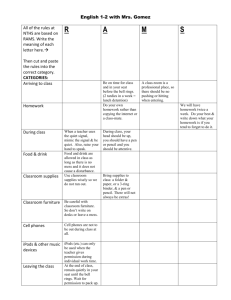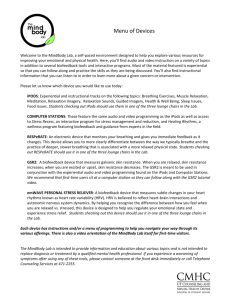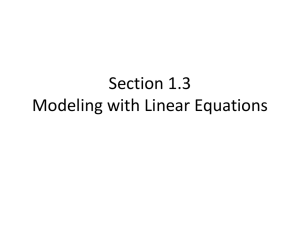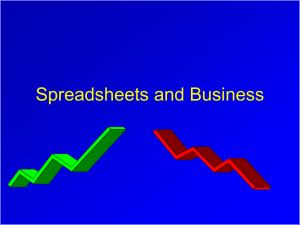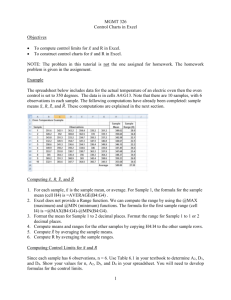LectureNotes_1_1
advertisement
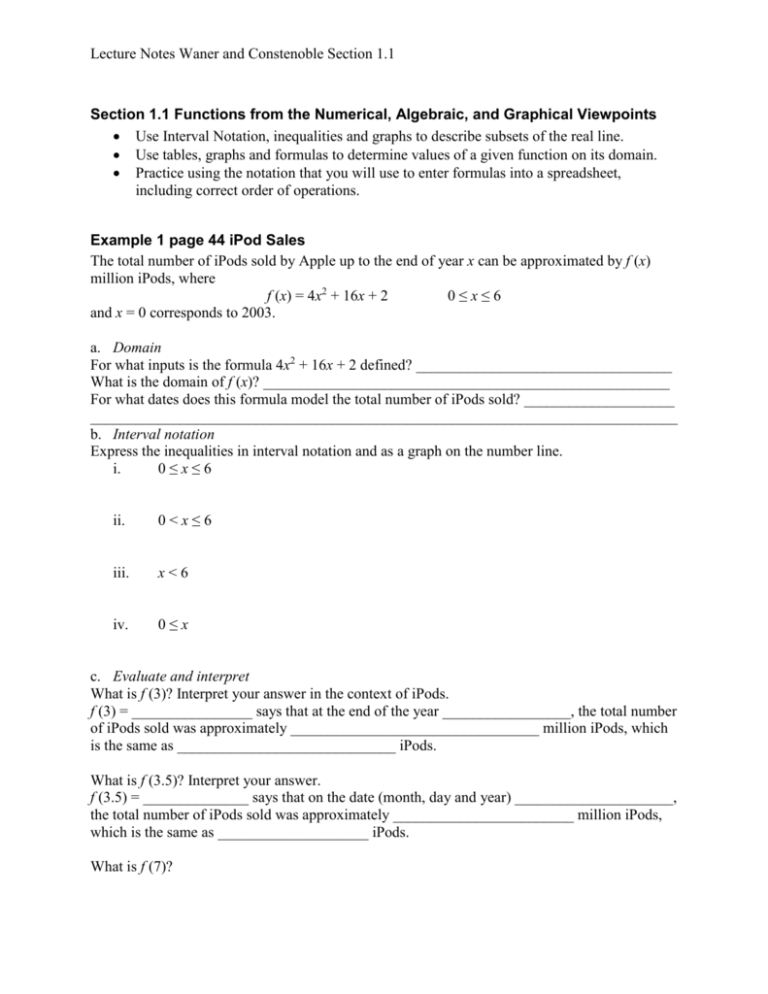
Lecture Notes Waner and Constenoble Section 1.1 Section 1.1 Functions from the Numerical, Algebraic, and Graphical Viewpoints Use Interval Notation, inequalities and graphs to describe subsets of the real line. Use tables, graphs and formulas to determine values of a given function on its domain. Practice using the notation that you will use to enter formulas into a spreadsheet, including correct order of operations. Example 1 page 44 iPod Sales The total number of iPods sold by Apple up to the end of year x can be approximated by f (x) million iPods, where f (x) = 4x2 + 16x + 2 0≤x≤6 and x = 0 corresponds to 2003. a. Domain For what inputs is the formula 4x2 + 16x + 2 defined? __________________________________ What is the domain of f (x)? ______________________________________________________ For what dates does this formula model the total number of iPods sold? ____________________ ______________________________________________________________________________ b. Interval notation Express the inequalities in interval notation and as a graph on the number line. i. 0≤x≤6 ii. 0<x≤6 iii. x<6 iv. 0≤x c. Evaluate and interpret What is f (3)? Interpret your answer in the context of iPods. f (3) = ________________ says that at the end of the year _________________, the total number of iPods sold was approximately _________________________________ million iPods, which is the same as _____________________________ iPods. What is f (3.5)? Interpret your answer. f (3.5) = ______________ says that on the date (month, day and year) _____________________, the total number of iPods sold was approximately ________________________ million iPods, which is the same as ____________________ iPods. What is f (7)? Lecture Notes Waner and Constenoble Section 1.1 d. Technology formulas You will use a spreadsheet to analyze data. Typing formulas into a spreadsheet is similar to typing them into your calculator. The spreadsheet interprets parentheses and operators, like +, –, *, /, and ^, according to the rules for order of operations. In a spreadsheet, always type * when you wish to multiply. o For example, type 3*5, not 3(5) to multiply 3 and 5. o Similarly, type 3*x, not 3x to multiply 3 and x. WebAssign 1.1 includes problems in which you write “Technology formulas” for given expressions. A "Technology Formula" is a formula that you would use on a spreadsheet. Example a. Write the technology formula for 4x2 + 16x + 2. b. Write the technology formula for 4x 3 3x 1 c. Which of the following represent(s) a technology formula for 3x1/2? 3x^(1/2) 3(x)^(1/2) (3*x)^(1/2) 3*x^1/2 3*(x)^1/2 3*x^(1/2) (((3))*((x)^(1/2))) Resources: At the end of each chapter, there is a “Technology Guide” for both graphing calculators and spreadsheets. In the margins next to some examples, a “using Technology” note explains how to use technology in given examples.


